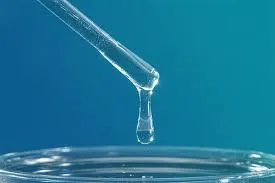
Oct . 05, 2024 00:19 Back to list
methylhydroxyethyl cellulose
Methyl Hydroxyethyl Cellulose An Overview
Methyl Hydroxyethyl Cellulose (MHEC) is a widely used water-soluble polymer derived from cellulose, which is a natural polymer obtained from plant cell walls. Known for its unique properties such as high viscosity, excellent water retention, and gel-forming capabilities, MHEC serves as a versatile ingredient in various industries, including construction, pharmaceuticals, food, and cosmetics.
Properties and Benefits
MHEC possesses a number of important characteristics that make it valuable in different applications. One of its most notable properties is its ability to thicken and stabilize aqueous solutions. This means that even at low concentrations, MHEC can significantly increase the viscosity of a liquid, providing the desired texture and consistency. This behavio r is particularly advantageous in construction applications where it is used in cementitious formulations. MHEC helps improve workability and adhesion, making it easier to apply materials such as tile adhesive and plaster.
Another important property of MHEC is its water retention ability. In construction, this property is crucial as it helps maintain moisture in mortar and plaster, leading to better hydration of the cement. This not only enhances the strength and durability of the construction materials but also reduces the risk of cracking as the material dries. Additionally, MHEC's ability to prevent segregation within mixtures ensures a uniform distribution of components, further improving the quality of the final product.
Applications
Construction Industry
In the construction sector, MHEC is predominantly used as an additive in cement-based materials. It improves the handling properties of mortars and provides enhanced adhesion to substrates. The thickening and water-retaining properties of MHEC help in achieving a smoother application and extending the open time of adhesives and mortars, allowing more time for adjustments during installation.
methylhydroxyethyl cellulose

Pharmaceuticals and Food
In the pharmaceutical industry, MHEC acts as an excipient in tablet formulations and as a binder in various products. Its ability to form gels makes it suitable for controlled-release drug formulations. Moreover, in the food industry, MHEC is used as a thickener and stabilizer in sauces, dressings, and dairy products. Its safety profile has made it a preferred choice for various food applications, providing texture without adding significant calories.
Cosmetics and Personal Care
MHEC also finds extensive use in cosmetics and personal care products. It functions as a thickening agent and stabilizer in creams, lotions, and gels. Its ability to enhance the texture and feel of formulations can significantly improve consumer satisfaction. MHEC is especially valued in products designed for sensitive skin, as it is considered a gentle and effective ingredient.
Environmental Considerations
As a derivative of cellulose, MHEC is biodegradable and environmentally friendly, aligning with the increasing demand for sustainable materials in various industries. Its natural origin and safety make it an attractive choice for manufacturers who aim to produce eco-friendly products, contributing to a greener future.
Conclusion
In conclusion, Methyl Hydroxyethyl Cellulose is a multifunctional polymer with a wide range of applications across various industries. Its unique properties, including thickening, water retention, and gel formation, make it an invaluable ingredient. Whether in construction, pharmaceuticals, food, or cosmetics, the benefits of MHEC are evident, allowing for improved performance, safety, and sustainability. As industries continue to seek innovative solutions, MHEC is poised to play a significant role in shaping the future of product formulations.
-
Versatile Hpmc Uses in Different Industries
NewsJun.19,2025
-
Redispersible Powder's Role in Enhancing Durability of Construction Products
NewsJun.19,2025
-
Hydroxyethyl Cellulose Applications Driving Green Industrial Processes
NewsJun.19,2025
-
Exploring Different Redispersible Polymer Powder
NewsJun.19,2025
-
Choosing the Right Mortar Bonding Agent
NewsJun.19,2025
-
Applications and Significance of China Hpmc in Modern Industries
NewsJun.19,2025







